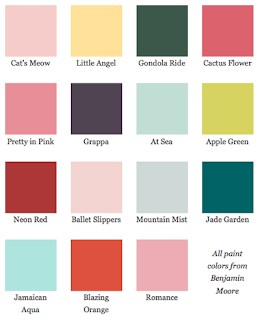The lobby at The Greenbrier, Dorothy Draper’s largest and most famous commission was recenlty restored by Carlton Varney, Drapers successor. Draper’s famous black and white marble floors remain in place, as does the white plaster over mantle, in Draper signature style.
Dorothy Draper, a New York Blue Blood, buried under the beige, brown and black cloak of depression, underwent extensive psychotherapy during the 1930's, and the resulting decorator's style was enthusiastic and inspired interior decoration. "Lovely, clear colors have a vital effect on our mental happiness" she claimed with the zeal of the newly converted.
A renewed interest on Dorothy Draper, a 1960's interior decorator from the USA, it could be said, is due in part to the trend towards an eclectic vintage style, a collage of styles borrowing from rococo, baroque and victorian, and blending with mid 20th century, to create a unique 21st century style. Dorothy Draper's style also tipped a hat to the past, but in an exaggeratedly modern manner.
"Dorothy Draper was to decorating what Coco Chanel was to fashion. She brought color into a world which was sad and dreary. Today...everyone wants color around them again." " says Carleton Varney, who took over the Draper Company in the 1960's.
The Museum of the City of New York held and exhibition of this iconic designer's work "the High Style of Dorothy Draper".
Sponsors of the event, Benjamin Moore created a limited edition collection featuring fifteen of Draper’s signature paint colours to showcase her sense of drama through colour and decisive choice of colour combinations.
From the museum website:
"Dorothy Draper was a pioneer in interior design, dominating the field, not only in New York but nationally, from 1925 to 1960 when she was named the most influential tastemaker in America. Extending her influence far beyond residential interiors, Draper made her mark on big-city hotels, resorts, offices, department stores, and apartment buildings—she even styled automobile and airplane interiors. And she was thoroughly modern in today’s terms in that she approached design as entertainment —a themed experience that ranged from a room's architecture to its furnishings, menus, and matchbooks. That she was a woman makes her achievements all the more remarkable, succeeding at a time when she had few counterparts in the business world."















